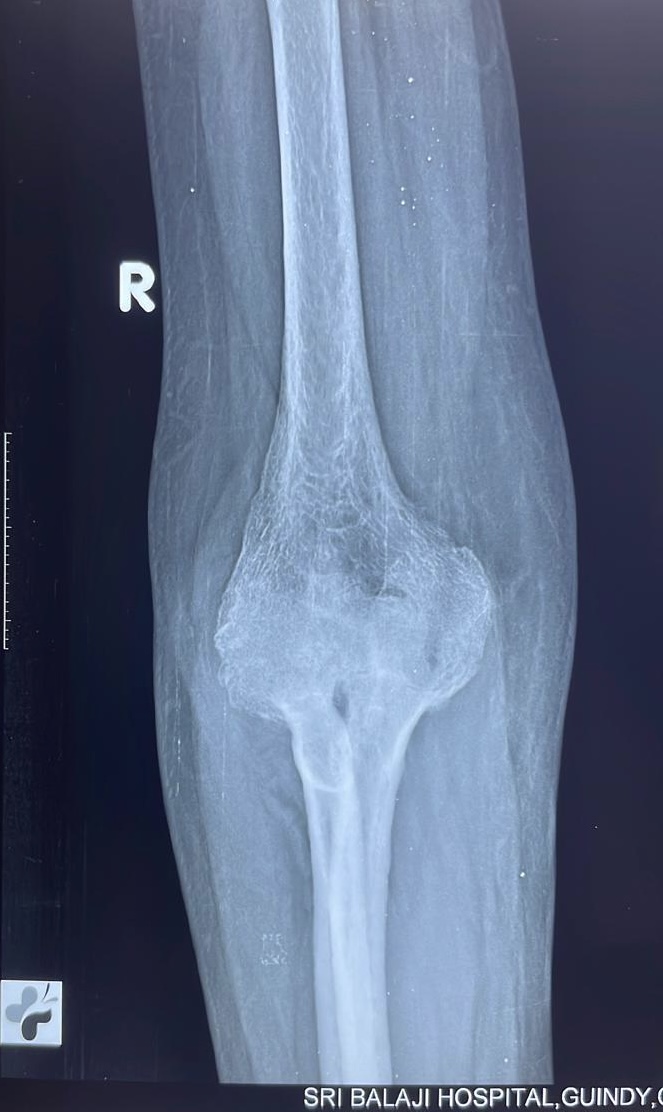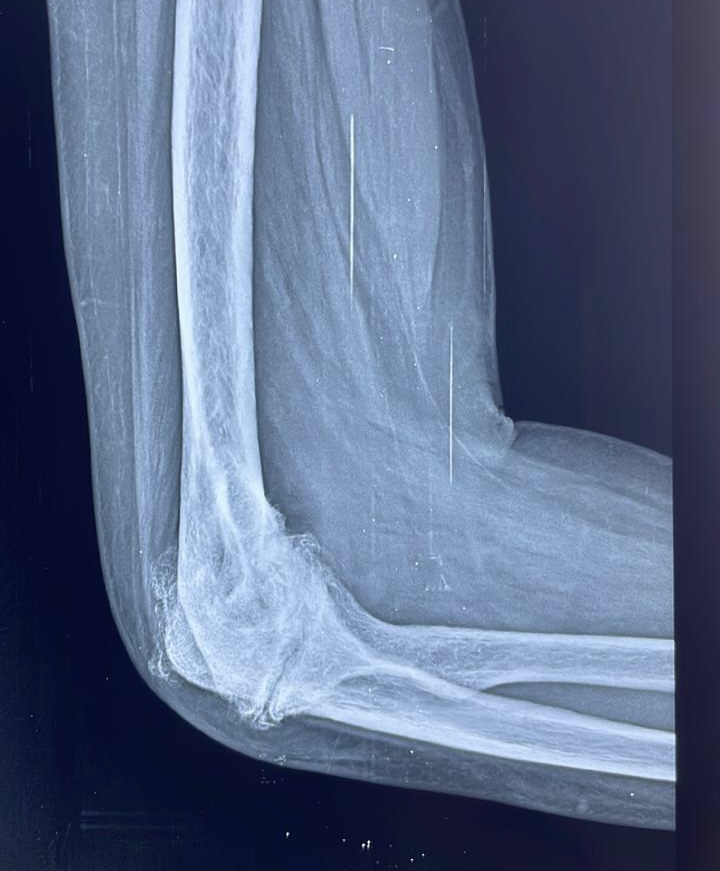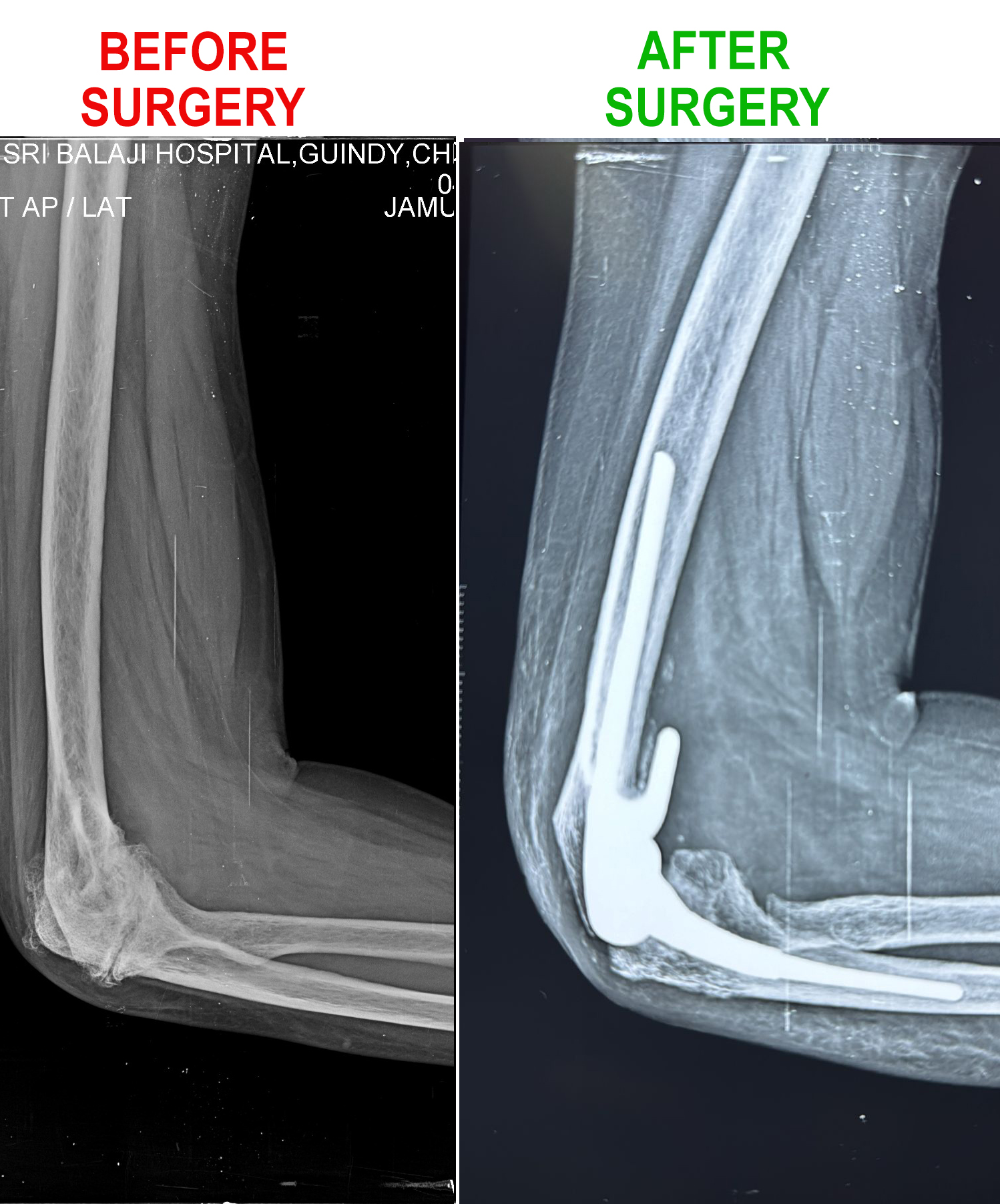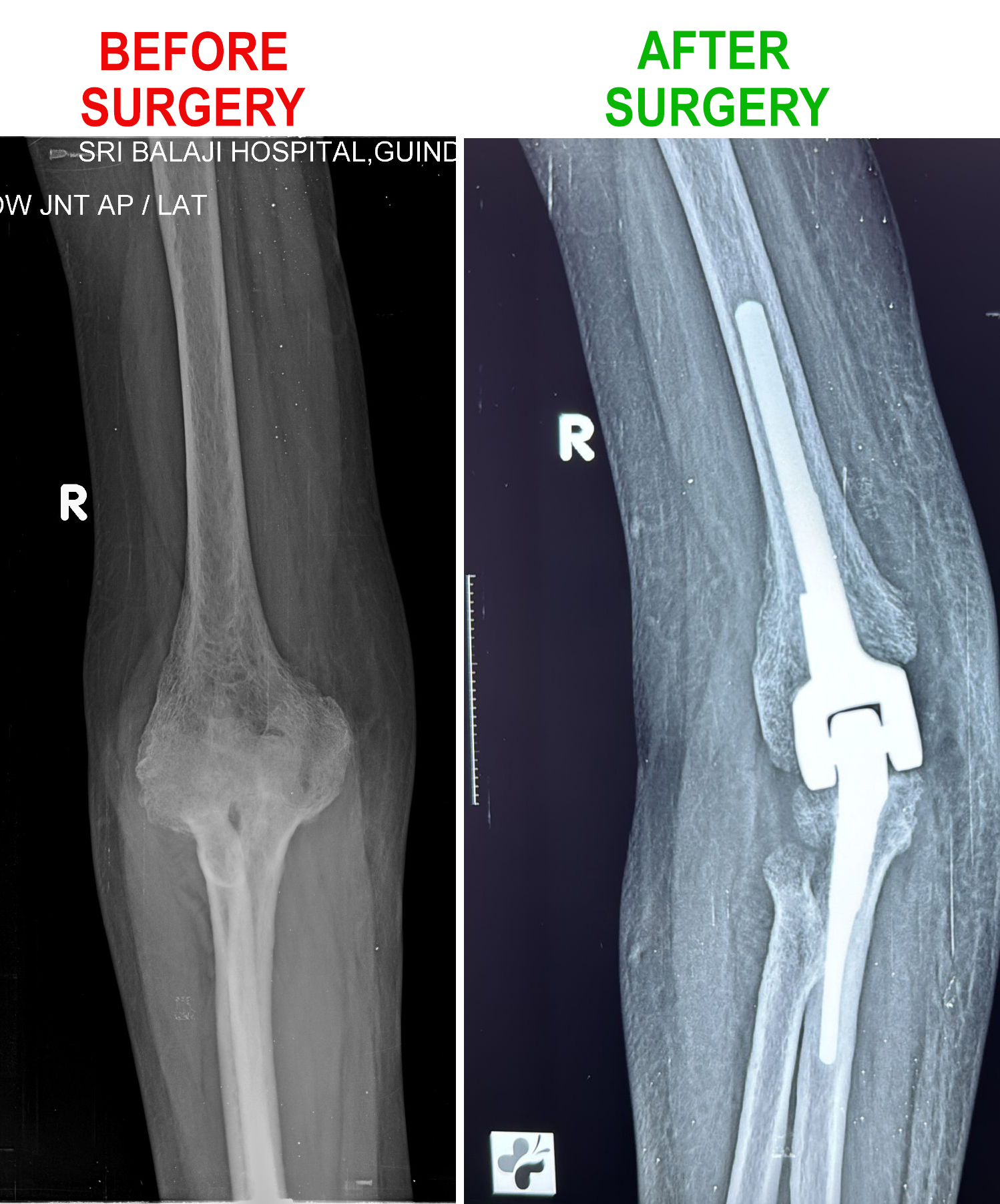Step 1: Consultation
Consultation with your joint replacement surgeon involves meeting with Dr. Balaji Subramanian. During this consultation, you will discuss how your elbow problem developed and the specific demands or requirements you have for your elbow. Dr. Balaji Subramanian will conduct a comprehensive physical examination. Based on your information and his examination, the need to assess the extent of joint damage will be determined. This assessment will be done through an appropriate form of radiological imaging, which will be selected based on your specific needs.
Step 2: Radiological Imaging
Simple X-ray of the elbow: The most basic form of imaging modality to visualise the elbow joint is the X-ray. Many (but not all) details can be obtained from viewing an X-ray. Note: An X-ray primarily reveals the bone and provides limited details. For a more comprehensive examination of the bone and the ligaments surrounding the elbow, a CT scan or an MRI scan of the elbow may be necessary.


X-ray showing severe destruction of the right elbow joint in a patient with rheumatoid arthritis.
- CT scan: Provides a more accurate and detailed image of the bones of the elbow. The CT scan provides a more precise insight into the state of the bones forming the elbow joint and the extent of their damage.
- MRI scan: Provides a good visualisation of most structures surrounding the elbow joint, including the bones, muscles, and ligaments that contribute to the stability of the elbow joint. It is usually suggested in suspected cases of elbow instability alone and NOT for all cases.
After obtaining the necessary details, the various options, benefits and limitations (if any) will be discussed with you.
Ultrasound-guided regional anesthesia
This is our preferred type of anaesthesia for upper limb surgeries and involves an injection for the upper limb on which the elbow surgery is going to be performed. This type of anaesthesia is safe and accurate, requires minimal use of any anaesthetic agent and, most importantly, continues to provide a pain-free experience for the patient even several hours after the surgery. Also, in this form of anaesthesia, the patient can be awake throughout the surgery with complete numbness of the limb through the entire duration of the procedure, providing a very safe and painless intra-operative experience for the patient.
General Anesthesia
It is the type of anaesthesia where the patient is fully anaesthetised during the surgery. The patient will be awakened by the completion of the surgery when they are ready to be shifted out of the operating theatre.
During the surgery, the damaged portion of the joint (partial or total elbow) will be prepared for the introduction of the medical-grade joint replacement implant. The implant, as mentioned earlier, may be partial/ total/ hinged or non-hinged. Preparations to introduce one of the above types of implants will be made according to the type of procedure being performed or the type that the damaged elbow requires.
Post-Operative Period
You may be required to stay in the hospital for a few days to provide adequate pain relief, monitor the progress of the operated elbow and begin physical rehabilitation exercises to help you achieve peak performance with your new functional elbow.
Expected Results
Elbow replacement surgeries (whichever type) are safe and help reduce pain and improve the range of movement which the patient has sadly lost due to injury or disease. Although less commonly performed around the world compared to other joints (knee/ hip/ shoulder), the success rates for elbow replacement surgeries are fairly high, with excellent results over 10 years.





